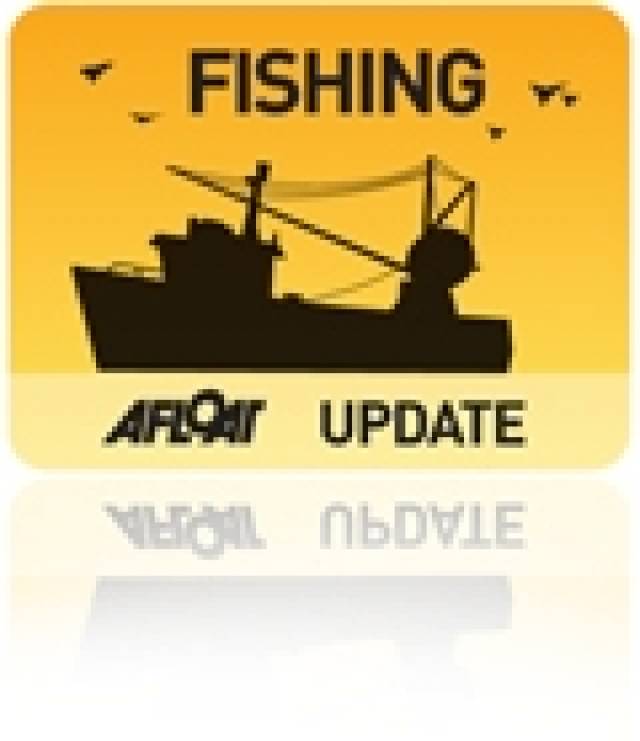#seafood – Simon Coveney, T.D, The Minister for Agriculture, Food and the Marine announced today the award of €2.4 million in grant aid to 25 seafood processing companies under the 2013 Seafood Processing Business Investment Scheme. Taken in conjunction with private sector investment the total investment will be over €8 million in 2013.
Scroll down the page for 2013 Grants approved.
Speaking at the announcement of the investments, Minister Coveney said:
"Processing is a high growth area in Ireland's seafood sector and has successfully targeted new business opportunities in markets like China, Russia and Africa. Overall exports were valued at €517m in 2012, an increase of 20% on 2012. This €8 million investment by the industry represents a very significant funding commitment by processing companies and Government to the seafood sector and underpins the confidence of new joint venture partnerships which were significant contributors to the increase in the value of Irish seafood exports in 2012".
The 25 companies receiving grant aid are from seven coastal counties across the country, namely Kerry, Dublin, Cork, Galway, Wexford, Mayo and Donegal.
The Minister said "The geographic spread of the companies receiving the grant aid is testament to the success of the Seafood Processing Business Investment Scheme and the innovative and creative developments happening in seafood generally".
The Minister made the announcement of the new investments at the launch of BIM's new strategy for the seafood sector 2013 – 2017. The strategy "Capturing Ireland's share of
the global seafood opportunity" sets targets for the creation of 1,200 additional jobs, aligned to a total sales value of €1 billion of which exports will form €650m by the end of 2017.
The Minister said "The Irish Seafood sector is currently in expansionary mode, it is a growth industry. I believe that through the type of investment supports and strategic plan announced today, the Government can assist Irish seafood processing companies to scale up, diversify further and innovate as they develop new markets, enhancing profitability and job creation prospects into the future."
Today's announcement follows previous investment supported by the Scheme of €10 million in 2012 and €7 million in 2011. Together these developments are setting a clear path to achievement of the potential of the seafood sector to create value added seafood products, as identified in Food Harvest 2020 and Action Plan for Jobs 2012. The Food Harvest 2020 strategy targets revenue growth in the seafood sector as a whole of €300 million by 2020, with employment capable of increasing by 3,000 in that period.
The Seafood Processing Business Investment Scheme is implemented as part of the Irish Seafood Development Programme 2007-2013. Grant aid is at a maximum rate of 20% for primary processing and 30% for secondary processing projects and is co-funded on a 50/50 basis by the Department of Agriculture, Food and the Marine and the European Fisheries Fund. The Scheme is implemented by BIM and Údarás na Gaeltachta, with Enterprise Ireland assisting in commercial evaluation of proposals. Successful projects are selected for grant aid by a selection board comprising the Department of Agriculture, Food and the Marine, BIM, Údarás na Gaeltachta, Enterprise Ireland, the Marine Institute, the South and East Regional Assembly and the BMW Regional Assembly
Eligible companies are seafood processing micro/ SMEs with premises approved by the SFPA. Eligible costs may include the purchase of new machinery and equipment and the construction, extension or modernisation of seafood processing enterprises. Scheme application forms are available from www.bim.ie.
2013 Grants Approved under the Seafood Processing Business Investment Scheme
|
Company Name |
County |
Investment € |
Grant € |
|
Star Seafoods Ltd. |
Kerry |
519,745 |
155,923 |
|
Kish Fish Ltd. |
Dublin |
181,537 |
54,461 |
|
Good Fish Processing (Carrigaline) Ltd. |
Cork |
284,000 |
85,200 |
|
Breizon Ltd |
Galway |
89,900 |
26,970 |
|
Atlantis Seafoods Wexford Ltd. |
Wexford |
107,522 |
32,257 |
|
Keohane Seafood Ltd |
Cork |
853,530 |
256,059 |
|
Connemara Seafoods Frozen Ltd |
Mayo |
134,640 |
40,392 |
|
Normandy Ireland Ltd. |
Cork |
102,847 |
30,854 |
|
Dunns Seafare Ltd |
Dublin |
353,000 |
105,900 |
|
Premier Fish Ltd. |
Donegal |
160,000 |
32,000 |
|
Kilmore Fish Co. Ltd |
Wexford |
349,300 |
104,790 |
|
Island Seafoods Ltd. |
Donegal |
119,000 |
35,700 |
|
Arctic Fish Ltd |
Donegal |
140,000 |
42,000 |
|
Shellfish De La Mer |
Cork |
550,747 |
165,224 |
|
Charlie Vial (Fish Merchant) Ltd |
Donegal |
84,658 |
25,397 |
|
CSI Seafood Products Ltd. |
Cork |
270,000 |
81,000 |
|
Sofrimar Ltd |
Wexford |
327,961 |
98,388 |
|
William Carr & Sons Ltd |
Cork |
268,895 |
80,669 |
|
Rockabill Shellfish Ltd |
Dublin |
197,719 |
59,316 |
|
Sean Ward Fish Exports Ltd. |
Donegal |
974,875 |
292,462 |
|
Oilean Mara Teo |
Galway |
378,561 |
113,568 |
|
Proseail An Clochan Liath Teo. |
Donegal |
91,007 |
27,302 |
|
Fastnet Mussels |
Cork |
518,050 |
155,415 |
|
Earagail Eisc Teo |
Donegal |
935,000 |
280,500 |
|
Cill Chiarian Eisc Teo |
Galway |
20,000 |
6,000 |
|
TOTAL |
8,012,495 |
2,387,748 |






























































